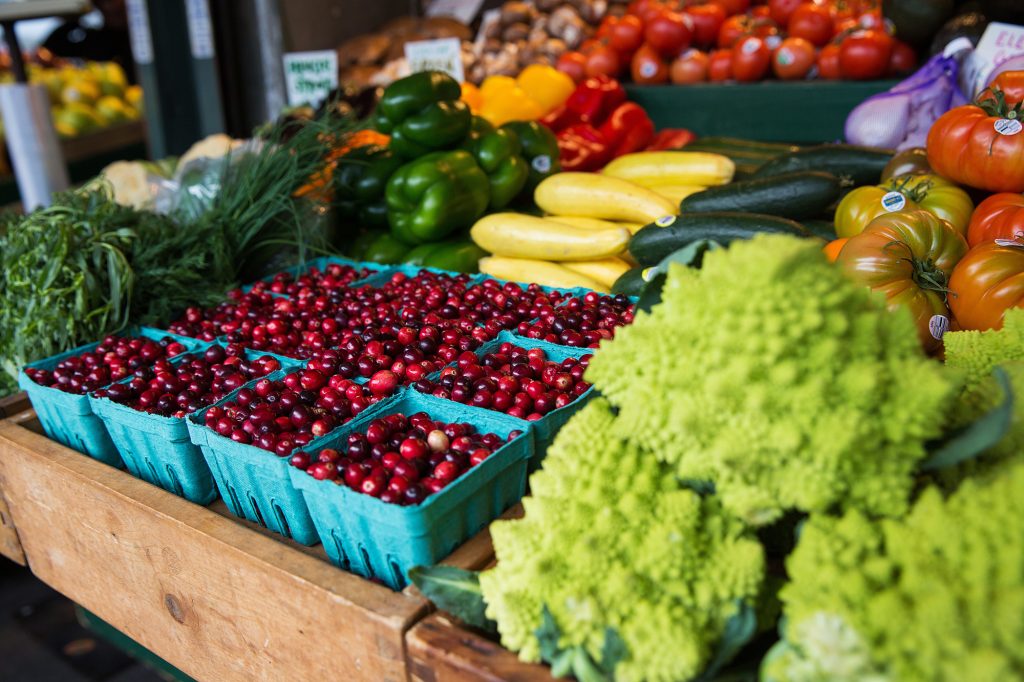How to Choose the Best Fresh Produce at the Market
You know the pattern. You go to the farmer’s market. You buy your fresh produce. And days later, you throw most of them away in a fit of frustration.
Here’s an unsavory surprise about that pattern: 40% of America’s waste, equivalent to $165 billion per year, is uneaten food left to rot in landfills. That’s an uglier number when you realize that our food uses 50% of our land and 80% of all consumed freshwater.
Waste not, want not, and keep reading for how to pick the juicy stuff from the old stuff so you can get your servings of fruits and vegetables instead of throwing them all away.
1. Use All Your Senses to Spot Fresh Produce
Count them, use them: sight, hearing, smell, taste, and touch. Okay, maybe not taste. The local farmers market probably doesn’t appreciate you taking free samples when they didn’t agree to give free samples.
You know what good produce looks like: vibrant, brightly colored. Picture the green of a great green pepper. (If you don’t, Vox has a nice graphic for that.)
You also know what it smells like. If it smells funky, that’s because it probably is. Move it along.
Sound will also steer you right in some cases, specifically watermelon and pineapple, where you can’t tell by looking. Give them a good whump – a hollow sound will tell you they’re good to go.
2. Check for Bruises
There’s always a bad apple in the bunch, specifically the one with the bruises.
I know, I know. Just because a fruit isn’t as pretty doesn’t mean it’s not as good. Trouble is that those bruises will also make the fruit rot faster. Bruises are also a sign that your fresh produce isn’t all that fresh.
If it’s bruised, it’s not that good. Class dismissed.
3. Check the Bottom of Berry Containers
Berries are one of those delicious yet frustratingly fragile bits of fresh produce. They taste great. They damage easily.
Since berries damage easily, they also rot easily. This means a whole lot of wasted berries and a whole lot of wasted money.
Here’s the trick. It’s a big one, ready? Check the bottom of the container.
That’s it. Check the bottom of the container. It’ll tell you more about that box of berries than you think.
For example, if there’s juice on the bottom, those berries have probably gotten a little too much tough love, i.e. they’re damaged and going to rot soon. Don’t buy those.
Example number two: fuzzy white/green stuff. We all know what that one means. Definitely not fresh. Keep calm and carry on.
4. Be Firm with Some, Less with Others
No, I’m not talking about your Marine drill sergeant voice. Practice that on your own time.
With some produce, firmness is a good sign. With others, it’s a sign you’ve got to use it or lose it. As in use it that same day or throw it out two days later when it becomes a science experiment.
Here’s which produce you want to keep a stiff upper lip and which ones you want a little softer around the edges. Keep in mind it also depends on when you’re planning on using the produce – same day use requires softer stuff.
The Firm Produce
I’m not talking rock hard. But, if you want produce that lasts for a little while then harder is generally better in these cases. This applies to tomatoes, avocados, apples, squash, etc.
The Softer Produce
Keep in mind: soft is not the same as mushy. Mushy means rot. Just don’t go there.
The trick with fruits like this is to buy them at varying levels of firmness if you want to have them throughout the week. Peaches, nectarines, apricots, plums and pears are all great examples – the sooner you want to eat them, the softer you want them.
But again: there’s a difference between soft and overripe. You don’t want the fruit to give readily when you gently squeeze it. Just enough that you know it’ll be tender when you cut it.
5. Ditch Wilted Greens
Does a wilted cabbage look like fresh produce to you? Good. It shouldn’t.
The majority of the leaves for any leafy greens, be it kale, spinach, iceberg lettuce, cabbage, etc. should be plump, smooth and unbroken. Anything else is a sign that the produce is old or damaged and is thus going to age and rot more quickly.
6. Smaller is Better
With okra anyway. Also squash and zucchini.
When it comes to okra, ignore the urge to buy bigger okra so you can stretch it longer. Okra larger than five inches is tougher and less flavorful than smaller okra.
7. Don’t Shuck the Corn
I know, I know. Everyone and their mother shucks the husk to check corn. Turns out, everyone and their mother is checking corn wrong.
You don’t need to see the kernels to see if the corn is fresh – that husk you keep unnecessarily shucking will tell you everything you need to know.
Here’s what to look for:
- Husks that are tightly wrapped. This is a good sign.
- Feel through the husks for missing kernels – it’s a sign the ear is damaged or overripe.
- Check for husks that are free of wormholes.
- Check the tassels – they should be brown and sticky.
Another good rule of thumb to stop throwing away corn: use it the day you buy it. The longer it sits, the sugars will start to turn to starch. Refrigerating also helps.
Live Smarter with UpGifs
We don’t just deal in helping you find fresh produce on your weekly grocery trips. We’ve got a ton of content on a variety of subjects to help this adulting thing be a little bit easier.
Example: check out our post on how to set a financial budget like an adult. Or 5 things you can learn from successful marijuana companies.
Whatever floats your boat. Like we said, content that helps make this adulting thing easier.
Want to tell us about your favorite post, request a subject or just say hi? Head to our contact page, we’d love to hear from you.



